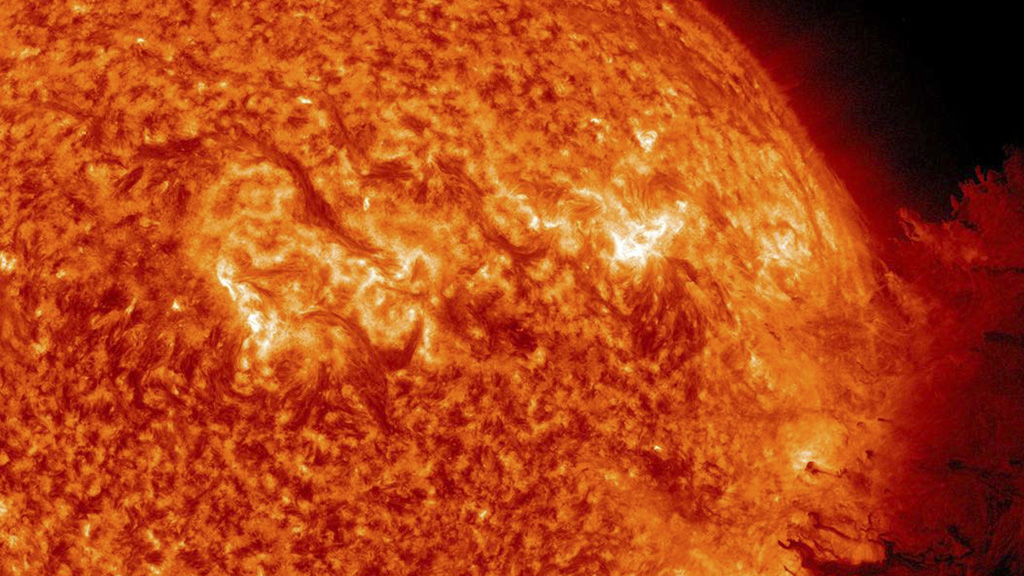Plan for solar superstorm or expect chaos, report warns
A solar superstorm could trigger black-outs, knock out satellites, and disrupt aircraft and shipping, says a report – and the UK needs a new body to brace itself against the event.
The government should set up a new quango to limit the risks and plan for the disruption caused by a solar storm according to a new report from the Royal Academy of Engineering.
It finds the threat of superstorms – caused by a pulse of charged particles blasted out of the Sun at close to the speed of light – is increasing as society becomes increasingly reliant on satellite based navigation, communication and micro-electronics.
The message from the experts: “don’t panic, but do prepare.”
‘Unexpected vunerabilities’
“The two challenges for government are the wide spectrum of technologies affected today and the emergence of unexpected vulnerabilities as technology evolves,” said Professor Paul Cannon, who chaired the Academy’s extreme solar weather working group said.
Minor space weather events happen all the time and are linked to the aurora seen around the north and south poles. But the report predicts a “superstorm” could happen every 200 years or so. The last one, called the “Carrington Event” of 1859, sent sparks flying from telegraph wires and caused fires, but caused little disruption.
However if a similar event happened today it could cause widespread black-outs across entire continents, knock out one in ten satellites and cause malfunctions in aviation electronics. While radiation levels for people in aircraft and on the ground would be well within safe levels, astronauts could be killed instantly by a massive blast of ionised particles.

Barrage of particles
Given there has only been one recorded “superstorm” experts admit they have no idea how frequent they might say an event on the scale of 1859 is “inevitable.”
National Grid said that they expect around six out of 800 supergrid transformers could be knocked out by a solar superstorm. The barrage of charged particles – which could last for a few days – could lead to a surge of current in transmission lines which can overload transformers causing them to fail catastrophically.
While only transformers at the edge of the grid network are thought to be most vulnerable each costs around £20m. Replacement can take up to four months.
There is some good news. Experts had predicted mobile phone networks could be knocked out by extreme space weather but found the risk – in the UK at least – is low. Our mobile, and landline, communications rely on GPS clocks for nano-second timing, however they have backup timers that kick-in in the event GPS signals are lost.
Other mobile systems, such as those used in the US, do not have back-ups and could fail if the GPS system temporarily fails.




